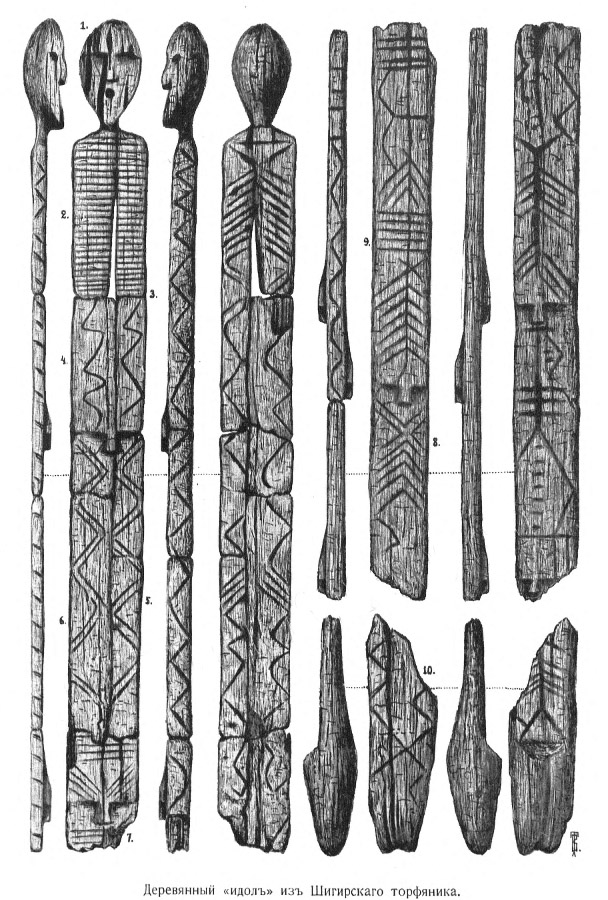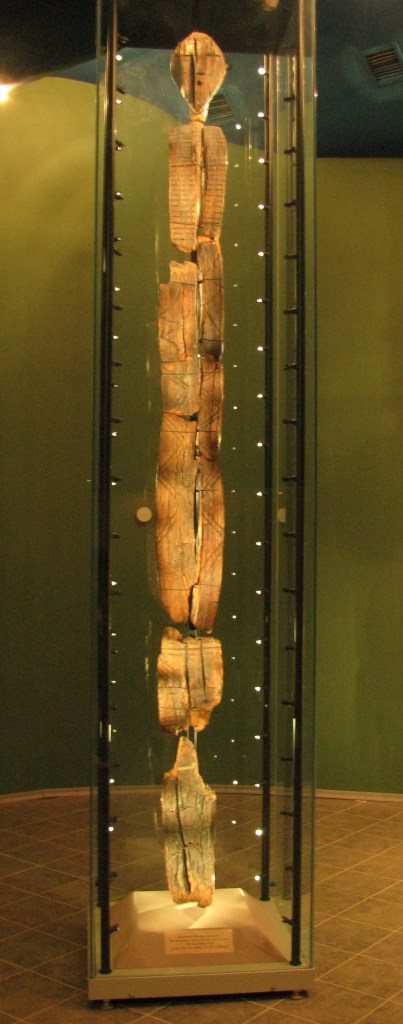We Just Found Out This Haunting Russian Statue Is 11,600 Years Old

We Just Found Out This Haunting Russian Statue Is 11,600 Years Old
The oldest wood carving in the world has just gotten older. Until last week, The Shigir Idol, a totemic sculpture that stands 2.8 metres (~9.2 feet) tall, was believed to be about 9,500 years old.
The Siberian Times reports that new testing by German researchers now shows that it was made 11,000 years ago, making it twice as old as the ancient Egyptian pyramids at Giza.

To examine seven small samples taken from the wooden sculpture, scientists in Germany used accelerated mass spectrometry.
The results date the idol to the very beginning of the Holocene epoch, or the geologic period that marks the development of human civilization. Researchers also determined that the sculpture was made from a larch tree that was, at the time, at least 157 years old.
“We can say the results are sensational,” said a source at Sverdlovsk Regional History Museum, where the Shigir Idol is currently on display (it’s owned by the Museum of the History of Yekaterinburg).
“This confirms that hunters and fishermen from Urals created works of art as developed and as monumental as ancient farmers of the Middle East.”
The idol was discovered in a peat bog in the Ural Mountains in 1890. Although the sculpture was in pieces, the fragments themselves were well preserved, thanks to “a combination of antiseptics,” in the words of Mikhail Zhilin, leading researcher of the Russian Academy of Sciences’ Institute of Archeology.
According to the online Encyclopedia of Art, a professor named Dmitry Lobanov reconstructed the figure as we know it today from the main fragments, although in 1914, an archaeologist named Vladimir Tolmachev suggested a different configuration using additional pieces that hadn’t been incorporated into Lobanov’s arrangement. Those extra pieces were later accidentally destroyed.

The sculpture, though anthropomorphic, remains a modern mystery. The face on top is clearly meant as such, and scholars speculate that a set of horizontal lines around the figure’s thorax represent ribs.
But the idol also has another six faces (all of them flat), along with geometric patterns carved all over its body. The markings have been called “encrypted codes” and “an early map, or navigator,” but there’s no consensus on what they represent.
“We study the Idol with a feeling of awe,” Zhilin said. “The ornament is covered with nothing but encrypted information. People were passing on knowledge with the help of the Idol.”
Despite the excitement of the new dating of the idol, Russian authorities are less than pleased with the German scientists who carried it out.
They claim that the samples used for testing were taken illegally, and that the sculpture was damaged in the process. The culture ministry in Moscow has reportedly opened a criminal case.